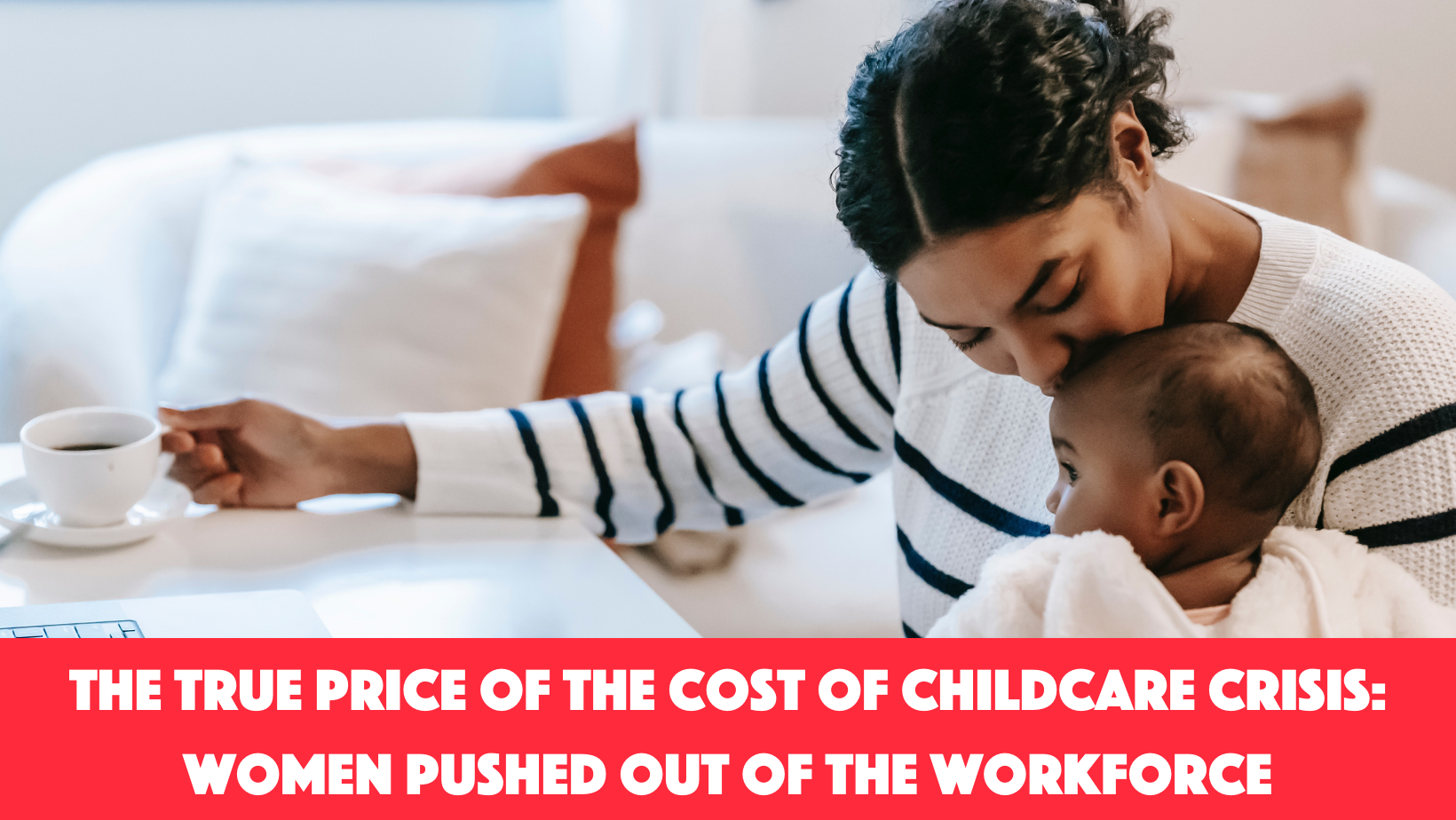The True Price of the Cost of Childcare Crisis: Women Pushed Out of The Workforce
The Government is trying to encourage stay at home mothers to return to full time work. But what if the cost of childcare is the sole reason behind you leaving the workforce in the first place?
The True Price of the Cost of Childcare Crisis: Women Being Pushed Out of the Workforce
By Veronica Morozova
In the UK, the cost of childcare has led to record numbers of mothers being pushed out of full-time work. According to research conducted by the OECD, the UK places as the third most expensive country for childcare among its members, marginally beaten by Switzerland and New Zealand.
a broken system
The Office for National Statistics and children’s charity Coram revealed that full-time daycare for children under three can cost 65% of a parent’s wage. The average cost of putting a child in nursery part-time is over £7,000 – this increases to a little over £14,000 for placing a child under two in full-time care. Moreover, three-quarters (72%) of local authorities report that over the last year, some or many of their local childcare providers have increased prices charged to parents. With the cost of living crisis and sky-high inflation squeezing countless households, the situation for parents is becoming especially dire — and many families are finding themselves using credit cards to pay for childcare, which threatens to land them in debt. Unsurprisingly, the situation is even worse for single parents (the majority of whom are women), and families who are not in work, have lost jobs or are in education.
Given the astronomical childcare costs, it’s hardly surprising that women are looking to slash their hours in order to look after their children. This, in addition to the fact that in parts of the country, there are limited or non-existent spots left in nurseries, and waiting lists can drag on for months, means that being a parent and keeping a full-time job is now a luxury.
While the current government continues to try - or at least, pretend to try - to address the issue, their attempts to do so have faced significant backlash.
Letter-writing campaigns won’t get mums back to work
The Department of Work and Education decided to set out a plan to get 'stay-at-home mothers' to re-enter the workforce through adverts and letters. The campaign is supposed to encourage mothers to return to the office as part of a “back-to-work blitz” - which many mums see as derogatory and, frankly, laughable.
The reason for the backlash is evident to anyone who has struggled with childcare costs: far too often, women choose to forgo returning to work because it is a financial necessity, rather than a choice. Staying at home is, for many families, a matter of what makes most sense economically.
It’s important to note that even when children are school aged, the time a mother might have taken off to look after the kids will look ‘bad’ on her CV. Employers often want any gaps from being in employment explained, and not every company will look fondly upon years taken off out of the workforce.
Ministers efforts to write articles in order to encourage women to return to work have therefore been branded as out of touch, with one parent on Twitter writing:
“The word ‘childcare’ does not make a single appearance in this article, which should tell you how completely unserious the government is about this.”
more needs to be done - asap
While some mums choose to step out of the workplace completely to look after their children, others turn to self-employment and freelancing out of necessity. For single parents, leaving the workforce completely is often simply not viable. Working for yourself, however ‘dreamy’ it might sound, is a far-cry from the ideal when you’ve got no other choice.
Nobody should be forced into self-employment simply because other options are unaffordable. Plus, the income for a self-employed person can fluctuate wildly, providing less security and the traditional perks of full-time employment (eg. a work pension scheme). Needless to say, this exacerbates the gender pay, pensions, and investment gaps, leaving mothers, on average, worse off than her male counterparts. Of course, some mothers find themselves thriving in self-employment, whether it’s running their own business or working for clients. But shouldn’t women have the option to choose between self-employment and 9-5 work?
Pregnant then Screwed have been doing amazing campaign work on the subject. In October last year, they held a march in support of affordable childcare. This was their manifesto:
“Childcare providers are falling like dominos, mothers are dropping out of the workforce in droves, the gender pay gap increased in 2021, and more families are now living in poverty. Have you had enough yet? These are political choices made by our Government and the only way we make them listen is if we organise.”
The campaign group doesn’t shy away from criticising the government for their slow response to the crisis. Joeli Brearley, founder of Pregnant Then Screwed said:
“Our research with tens of thousands of parents demonstrates that the Government’s approach to childcare just is not working. The Government says they care about the cost of living crisis, and have committed to leveling up, but when two thirds of families are paying the same, or more for their childcare than their rent or mortgage and they are skipping meals to be able to afford it, something has gone horribly wrong. They don’t understand that this isn’t just a women’s issue, it’s an economic issue.’’
The importance of having women in the workplace
When more women work, economies grow. As reported by UN Women and based on 2020 research, “Women’s economic empowerment boosts productivity, increases economic diversification and income equality in addition to other positive development outcomes.” Empowering women to participate equally in the global economy could add $28 trillion in GDP growth. Unfortunately, it is still true that on average, when women are employed, they tend to work in low-quality jobs in vulnerable conditions, and there is little improvement forecast in the near future.
As the International Labour Organisation writes,
“the freedom to work – by choice, in conditions of dignity, safety and fairness – is integral to human welfare. Guaranteeing that women have access to this right is an important end in itself.”
what’s the solution?
Grazia Daily has worked closely with Pregnant then Screwed to campaign for subsidised childcare. This is what they have to say:
“A well-functioning childcare system could help support families and help government achieve many of their aims. It would support women to enter and progress in the workplace, tackling the gender pay gap that opens up after the arrival of children. There is evidence that Government could recoup 95% of spend on childcare through additional tax income. Nurturing and caring for our children is not just a commodity. It is a social good that helps children to learn and thrive. Treating childcare like something we buy and sell on a price comparison website means that it can’t fulfil its potential to change the lives of both children and parents. Instead, we end up with a system where childcare professionals are underpaid, quality is not a top priority, and where parents can face astronomical prices.”
It is clear, then, that the solution is actually quite straightforward: the government needs to subsidise childcare and make it a priority. Other countries, notably Sweden, Finland and Denmark, have succeeded in doing this. This begs the question: why can’t the UK follow in their steps? We simply cannot stand by while mums are forced out of work. Without urgent action to support women to stay in work, we risk losing decades of progress on women’s labour market participation — and forcing women to choose between having a fulfilling career or having children.

